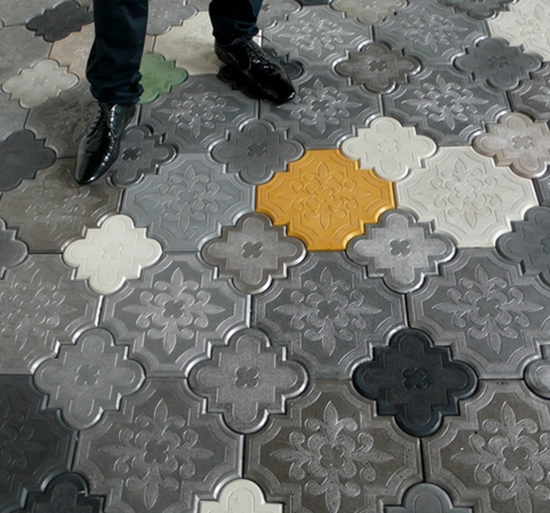Concrete tiles are excellent options for your house flooring or walkways as alternatives to the conventional porcelain or clay tiles. You can easily design and make concrete tiles at home by following some simply steps. You can apply mosaic effect, multiple color effect or color shading effect by adding powdered dry color to the concrete. You can also make the tiles look stylish and decorative by making designs on them. Concrete tiles are most suited for walkways, pavements, garage floors, etc.

Difficulty level: Moderate
Time required: About 8-10 days
Resources required
- Plastic tile molds (can be made at home using wooden blocks, plaster of Paris or even cardboard boxes)
- Concrete mix (includes sand, Portland cement and small gravels)
- Mixing water
- Mold release (vegetable oil will also serve the purpose)
- A sponge
- Reinforcing wire
- Concrete color
- Sealant
- Plastic tarp
- Gloves
- Goggles
Estimated cost
The main cost involved in this project is that of Portland cement which is about $7 for a bag of 94 lb. Other resources are easily available from a household stationery shop at very low prices.
Instructions
- First of all, design the molds for building the tiles. You can make tile molds by taking measurements and nailing wooden blocks. Alternatively, you can also design decorative tiles by using plaster of Paris or even a cardboard box. You can also purchase molds from the market. Make sure that all the molds are of equal dimensions in all aspects. You can also opt for interlocking models for better grip and placements.
- Next, prepare the concrete mix. Mix appropriate proportions of sand, Portland cement, gravels and some water to make the concrete mix. If you need to add color, mix the color powder to the dry mixture before adding water. Once you add water, you won’t be able to modify the color any more. Do not add excessive water or the concrete mix will drip. Make the mixture similar to the consistency of butter.
- Apply a layer of mold release on the inner walls of the tile molds. Apply a very thin layer of the mold release or vegetable oil using the sponge. Wipe off any excess oil from inside or it will ruin the tile.
- Pour the concrete mix in the molds very cautiously so that they do not overflow with concrete. Use the reinforcing wire in a meshed manner inside the molds in the case of bigger tiles. After this, tap the filled mold on the ground to bring the water or air bubbles to the surface. If you are making a large number of tiles, you can choose a vibrating table or a stick vibrator.
- If you want to add decorative designs on your tiles, you can do so while the concrete is a bit hard but still soft using stencils.
- Place the molds on a flat surface and cover them with a plastic tarp before setting them to dry. This will prevent the concrete from drying quickly. The concrete will take about 24 hours to dry.
- The next process is the most important one as far as the durability of the tiles is concerned. Concrete requires about 7-8 days to cure. Keep the tiles covered by the plastic tarp to retain the moisture so that it slowly cures.
- After curing, de-mold the tiles. The molds with a better coating of mold release will come off easily. For wooden or plaster of Paris molds, you may have to break the same to take out the tiles.
- You can color the concrete tiles later and lock the color using a layer of sealant.
Quick tips
- Be sure to make the tiles thick enough. A tile of area 1 square foot needs to be at least half inch thick.
- You can give mosaic effect to the tiles by adding mosaic pebbles just when the concrete is a bit soft.
- Drying and curing of concrete are two different processes. Drying requires 24 hours while curing requires about a week.
Things to watch out for
- Concrete powder or dust may generate irritations to persons who are prone to allergies. Thus it is suggested to wear safety gears like goggles, mask and hand gloves before starting this project.
- Never try to dry the concrete quickly under direct sunlight. This will make the concrete brittle and break easily.
Environmental aspect
Concrete tiles are completely eco friendly and can be easily made and installed at your home. Moreover, they can be used as a replacement of wooden tiles which would save the greenery up to a considerable extent.
Conclusion
Concrete floor tiles are very easy to make at home and are much durable and easy to maintain. Thus you can easily try out this DIY project and remodel your house flooring beautifully.




